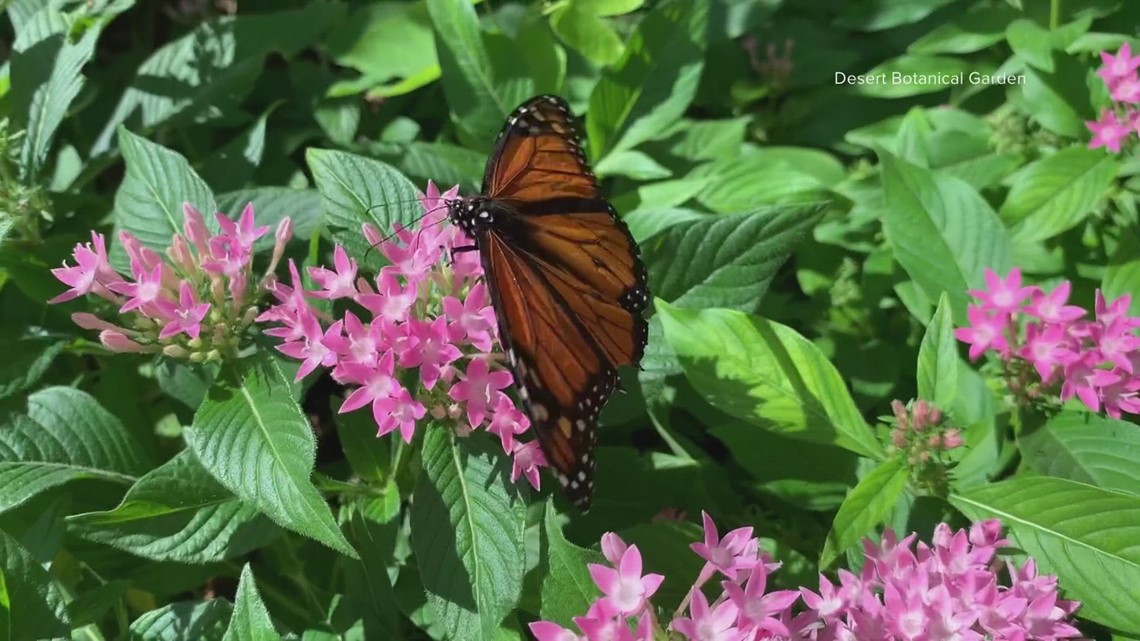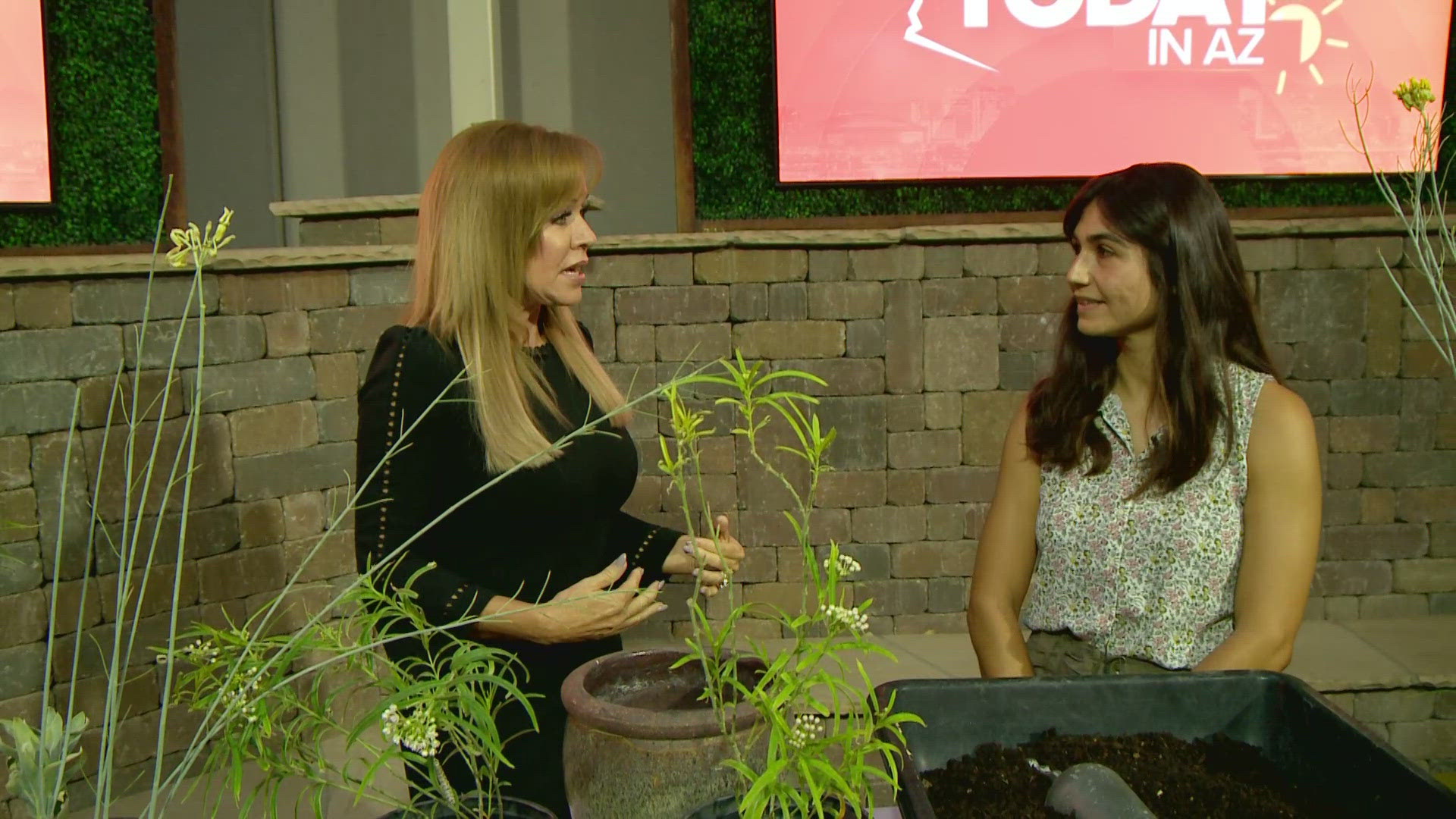PHOENIX — Monarch Butterflies; not just beautiful, but also an important barometer for the health of our world.
Over the past few decades, the Monarch population has greatly diminished, sparking major concerns about the health of our ecosystem. Because monarchs are so well known, and their decline is easy to measure, they are leading indicators of what’s ahead for other pollinators.
Pollinators spread pollen from flower to flower, which is necessary for plants to become fertilized and produce fruits, seeds, and young plants. The National Pollinator Garden Network estimates that butterflies, bees, birds, bats, beetles, and other small mammals that pollinate plants are responsible for bringing us one out of every three bites of food we eat each day.
Habitat loss is the leading cause of the monarch population bust. In particular, the loss of milkweed has been devastating for the population because milkweed is the only plant that a monarch will lay its eggs on and is the only source of food for monarch caterpillars.
Fortunately, people — especially Arizonans — can help. Milkweed is easy to grow, and the hardy plant absolutely thrives in our state.


GROWING MILKWEED
A native plant to Arizona is key to rebuilding the monarch butterfly population which is suffering due to a decline in habitat.
Desert milkweed serves as a nursery for monarch eggs, in addition to providing food for monarch caterpillars.
Plant and Ecology Program Manager Natalie Melkonoff from Desert Botanical Garden joined Today In AZ's Ginger Jeffries to discuss how, where and when to plant milkweed.
Where:
Most milkweeds require full sun (at least 6 to 8 hours a day). Because they self-seed readily, locate your plants in a part of the garden where you can better control their rampant spread, such as at the back of the border or in a corner. A spot that’s protected from the wind will also help prevent the spread of seeds while providing a more hospitable environment for butterflies.
When:
If you’re planting milkweed from seed, sow the seeds outdoors in the fall, which will give them the period of stratification (exposure to cold, moist conditions) they need to encourage spring germination and ensure a good display of flowers the following summer. If you purchase starter plants, plant them in the spring after the danger of frost has passed.
Soil:
The best soil type for milkweed often depends on its native habitat. Most varieties are extremely forgiving and will grow well in average garden soil. Swamp milkweed is an exception and requires moist, humus-rich soil.
How:
To ensure successful germination of milkweed seeds, plant them in a smooth, clump-free soil bed worked to a fine consistency using a rake or rototiller. After you’ve sown the seeds, compact them into the soil (but don’t cover them) to provide good soil-to-seed contact. Keep the planting bed moist until the seedlings become established. As your plants begin to take off, thin out any plants that are spaced too closely together so they don’t compete for sun and soil nutrients.
Spacing:
To attract monarchs to your garden, plant milkweed in groups of six or more, spacing plants or thinning seedlings to about 6 to 24 inches apart, depending on the species.
Propagating:
Many milkweed species can readily be grown from root or rhizome cuttings as well as by seed. Take the cuttings during the late fall or early spring when the plant is dormant and has more energy reserves. New sprouts will form from the cuttings when the weather warms and will often produce flowers the first year.
WE ❤ ARIZONA
Explore amAZing people, places and things across our state on our 12News YouTube playlist here.


